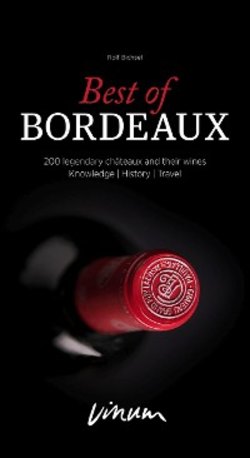Читать книгу Best of Bordeaux - Rolf Bichsel - Страница 20
Оглавление20
History The new French claret
The wines from these soils were a translucent, clear, bright red colour like
virtually all of the ‘red wines' produced in the cultivation area we now call
France up until the mid-19th century. The English called it claret, which in
Britain remains a synonym for Bordeaux to this day. These wines were not even
particularly elegant or refined, as people would sometimes have us believe.
Instead, they had a robust constitution in order to withstand the rigours of
shipping in reasonable condition and so that they only turned sour once poured
into the purchaser's glass. Without a doubt, they would have been sweet and
sparkling as happens to wines today if we leave them to their own devices,
which was the practice at the time. The few historic sources citing wines with
their origins (Andely, Rabelais, Villon) make no mention of Bordeaux until the
late 16th century.
The New French Claret
The concept of a Grand Vin, differing from standard wine like a prince from
a pauper, came to the owner of a plot called Ho Brian (Haut-Brion) to the south
of Bordeaux between 1550 and 1650, a flash of inspiration which should earn
him a heartfelt tribute from any halfway grateful Bordeaux fan. Of course, the
various Jeans and Arnauds de Pontac (in Bordeaux as elsewhere, first names
are re-used throughout multiple generations, making genealogical research a
particularly exacting activity), were thinking not of winemaking posterity, but
rather of their own pockets and economic survival. During this same period of
history, Columbus ran aground in the Bahamas in 1492, Magellan circumnavi-
gated the globe for the first time in 1519, and in 1582 German doctor and natural
historian Leonhart Rauwolf wrote a 500-page volume recounting his Oriental
travels, which included a passage on Turkish drinking habits (page 105): ‘among
the rest they have a very good drink they call Chaube that is almost as black as
ink and very good in illness, especially of the stomach.' In 1550 the first coffee
house opened in Istanbul, Venice began brewing mocha in around 1600, and
bags full of ‘Chaube' beans were first listed on the London and Marseille port
registers in around 1650. The assiduous Rauwolf revealed that the Turks viewed
coffee as a replacement for wine, the consumption of which was a punishable
offence across the entire Ottoman Empire (with the exception of short periods
of drinking freedom).
If the Bordelais in general (who had been making a living from winemaking
for more than 300 years) and the de Pontacs in particular (who were heavily reli-
ant on it because they gave with one hand and took away with the other) wanted
to defy the nascent competition, they had to come up with something whether
they liked it or not. Their local wines, which were only successful because A) the
water was so dangerous to drink that it had to be disinfected with this wine and
